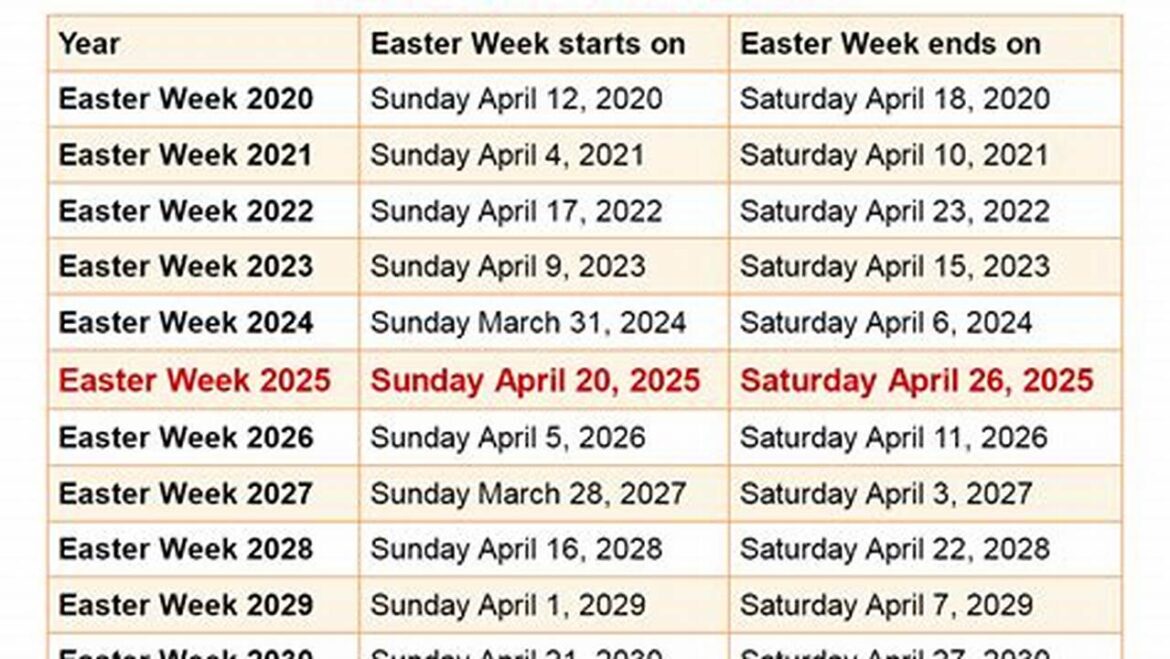In the Christian calendar, the date of Easter is a significant and oft-debated topic. Unlike fixed holidays that occur on the same day each year, Easter is characterized by its fluidity, moving between March 22 and April 25. This variability can be attributed to its dependence on the lunar calendar rather than the Gregorian calendar that governs the majority of modern scheduling.
Easter, celebrated to commemorate the resurrection of Jesus Christ, is the culmination of a series of events that begins with Lent, a period of reflection and repentance lasting 40 days. This period leads into Holy Week, which includes Palm Sunday, Maundy Thursday, and Good Friday. Each of these days carries its own significance and prepares believers for the joyous celebration of Easter Sunday.
The method of calculating the date of Easter is rooted in the ancient Church’s desire to correlate the celebration of the resurrection with the Jewish Passover. According to the formula established by the Council of Nicaea in 325 AD, Easter falls on the first Sunday after the first full moon occurring on or after the vernal equinox. This dichotomy between lunar and solar calendars exemplifies the Church’s attempts to unify the disparate traditions of early Christianity with those of Judaism, underscoring the importance of historical context in understanding modern practices.
As a result of this calculation, the dates of Easter vary significantly from year to year. For instance, in 2025, Easter will be celebrated on April 20, while in others, it can occur as early as March 22. This vast range often leads to confusion among congregations and prompts theological discourse regarding its meaning and implications. Observances around the world reflect these dates, leading to a tapestry of traditions that enrich the global Christian experience.
Different denominations also interpret the significance of the date of Easter uniquely. In Western Christianity, primarily Roman Catholicism and Protestant denominations, the Gregorian calendar is utilized, while Eastern Orthodox churches often adhere to the Julian calendar, resulting in a typically later date for Easter celebrations. Despite these differences, the underlying theology remains consistent: the resurrection signifies victory over sin and death, offering hope for eternal life.
Moreover, the malleable nature of Easter’s date reinforces its importance in the liturgical calendar, prompting reflections on the temporal dimensions of faith itself. As believers await the arrival of Easter, they engage in spiritual disciplines, such as fasting and prayer, intended to deepen their connection with the divine. The anticipation acts as a counterbalance to everyday concerns, creating a sacred rhythm punctuated by both somberness and joy.
In addition to its theological implications, the date of Easter invites attention to cultural expressions of the holiday. Various customs, such as egg decorating, sunrise services, and the Easter Bunny, reveal how communities have infused local tradition into the celebration. These practices vary widely, reflecting the diverse ways in which people express their beliefs and values through the lens of Easter.
In the context of liturgical celebrations, different days leading up to Easter deserve special attention. Palm Sunday, which commemorates Jesus’ triumphant entry into Jerusalem, often features the procession of palm branches, symbolizing victory and peace. Maundy Thursday, marking the Last Supper, invites Christians into a profound reflection upon humility and service, often depicted through the practice of foot washing. Good Friday presents the stark contrast of suffering and sacrifice, drawing attention to the events of Jesus’ crucifixion.
The theology underpinning these successive events fosters a deepened understanding of Easter’s significance. Each observance acts as a building block leading to the climax of the resurrection, illustrating the path from death to life, despair to hope. This narrative arc serves not only as a historical recounting but as a lived experience that resonates across generations.
Easter morning, with the proclamation of “He is risen,” embodies the essence of the celebration. The resonant joy found in worship services, complete with joyous hymns and jubilant gatherings, reinforces community bonds and the shared faith among believers. The vibrant colors, flowers, and hymns collectively revive the essence of life and renewal. In this light, Easter transcends mere chronology; it becomes a profound reminder of the transformative power of faith.
While the date of Easter may shift annually, its relevance remains constant. Theologically rich and culturally diverse, Easter encapsulates the core of the Christian faith—resurrection, renewal, and hope. As each year approaches this significant date, Christians around the world prepare to embark on a journey not only towards a date in the calendar but towards a collective reaffirmation of their faith’s foundations.
In conclusion, the dynamics surrounding the date of Easter reveal much about the Christian tradition. It illustrates not only a commitment to historical authenticity but also showcases the multifaceted expressions of faith. The variety in observance, the continuity within the celebration, and the anticipation of renewal enrich the communion of believers, uniting them in shared hope and purpose year after year.



